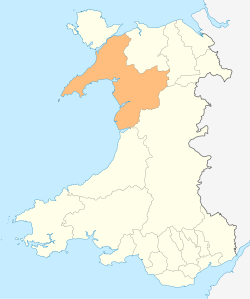This article has multiple issues. Please help improve it or discuss these issues on the talk page . (Learn how and when to remove these messages)
|
| Brynrefail | |
|---|---|
 Afon Caledffrwd at Pont Brynrefail | |
Location within Gwynedd | |
| OS grid reference | SH558626 |
| Community | |
| Principal area | |
| Country | Wales |
| Sovereign state | United Kingdom |
| Post town | CAERNARFON |
| Postcode district | LL55 |
| Dialling code | 01286 |
| Police | North Wales |
| Fire | North Wales |
| Ambulance | Welsh |
| UK Parliament | |
| Senedd Cymru – Welsh Parliament | |
Brynrefail (also Bryn-yr-Efail) is a small village in Gwynedd, Wales. The village is in the Dwyfor Meirionnydd UK constituency and the Gwynedd Council Ward of Penisa'r Waun. It is close to the northern shore of Llyn Padarn lake. Along the main street there are mainly traditional terraced houses. Notable buildings include the village's post office and the village's sole chapel, which is still in use. The village is protected from Llanberis and has a dedicated community beat manager.

